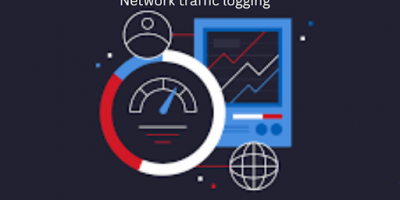When you need 100% accuracy, human translation still takes the cake, however it can be more expensive in terms of time and money.
Although machine translation has made significant progress, it is still not completely accurate. Its affordability and ability to provide translations almost instantly, while yet being accurate enough for many use cases, are its key benefits.
We’ll delve deeper in this piece to clarify which strategy is best for your circumstances.
1. The differences between Human and Machine translation
Translation speed
The speed of delivery is frequently emphasized in the marketing of computer-driven translation software, with the claim that human translations will take significantly longer to finish. The statement is accurate, but it’s highly overstated how much time it takes. The time between placing an order and receiving a translation has significantly decreased thanks to user-friendly online human translation services. Additionally, because the margin of error is so much less, the customer spends less time making adjustments and, more significantly, avoids the shame of utilizing subpar or inaccurate translations. Although time is valuable, quality should never be sacrificed.
Cultural references
Machine translation does have its uses, therefore we aren’t trying to be negative about them. But other things are simply impossible for machines to translate accurately. Sarcasm, humor, accents, catchphrases, metaphors, double entendres, and idiomatic speech are examples of this. Additionally, they are unable to grasp the significance of tales and inside jokes. A human translator can think beyond the written words and determine the most accurate translation of a sentence from one language into another.
Human translators are skilled in the symbols, idiomatic idioms, and cultural sensitivities unique to each country. Machines run the danger of offending the reader or being misinterpreted because they are unable to comprehend cultural norms and values.

Translation context
In many languages, there are words with numerous meanings, which can be quite difficult for the robots to understand. Only humans are skilled at providing an appropriate translation since these words must be related to the context. For instance, the English term “spot” has several different connotations. It can be a spot on someone’s face, a stain on clothing, an advertisement, or a physical location. This is challenging for machines since they simply don’t comprehend the context and will translate something literally even if it may not be appropriate. When you use a machine translator to translate a text like an instruction manual, you will get a lot of unclear and erroneous translations, which could cause major issues.
Trends and timeliness
Languages are constantly evolving as a result of new jargon and cultural influences, changing day by day. Before they are recognized as words, new terms like “buzzy” and “on-brand” are frequently in common usage. People pick up on modern linguistic developments and trends far more quickly than they can be formally tracked and entered into computers, so a machine translation database may be regarded as archaic in comparison to a human’s vocabulary.
Cost
The cost of using a machine translator is typically less than that of a human translator. You don’t have to pay anything to translate eCommerce web pages when you use a search engine translator. Price, though, is not necessarily a good indicator of worth. The translation of important business documents shouldn’t be left in the hands of a computer program because there are many things that human translators can do that machines cannot.
2. Why is it better to use human translation?
When you need utmost accuracy, human translation services are preferable than machine translation.
Even while machine translation services have significantly improved recently, none of them yet offer accuracy levels equal to those of a native speaker.
For instance, the accuracy of Google Translate is still only about 90–95% at its best, and it can even be lower depending on the language pairs you’re utilizing.
That level of accuracy simply won’t do for some use scenarios.
Your translations will be as accurate as humanly possible!
This degree of precision could be crucial to the success of a presentation you are preparing.
Similar to this, if you have a website, critical sales pages, contact pages, legal terms, etc. usually require this level of accuracy.

3. How to choose the best translation services for your business
Ask the translation company whether they utilize human or machine translation before agreeing to work with them. Understanding how much each component contributes to the overall process is crucial if the agency uses both in a complementary setup.
Since language is a human ability, translation cannot be completely left to robots. Although human labor can always be complemented by translation memory software and other techniques, using them alone may not always produce desirable outcomes.
Always choose document translation services that have native speakers of the languages you need. There is no assurance that someone would provide the best translation just because they can speak the language.
If you need translation assistance, native speakers will provide it with unparalleled linguistic fluency and an articulate awareness of cultural allusions.
Check the linguists’ credentials when selecting a translation agency for your language-service requirements. The services of qualified translators won’t let you down.
4. Conclusion
To combine the greatest qualities of both worlds, augmented intelligence employs both machine translation and human translation. The subject of machine vs. human translation has been extensively discussed. Instead of comparing them, it is preferable to combine them. This technology is turned into a tool by human translators who use it as a translation help. In translation, the human translator will always play a part and be responsible for a variety of tasks. Because of this, technological advancements in translation will continue to provide doors to significant growth.
Learn now how combining machine translation with professional linguists may help you maximize the cost, speed, and quality of your translation projects. Describe it to GTE Localize, and we’ll work with you to choose a language strategy for your enterprise based on your requirements and possible markets.














Comments